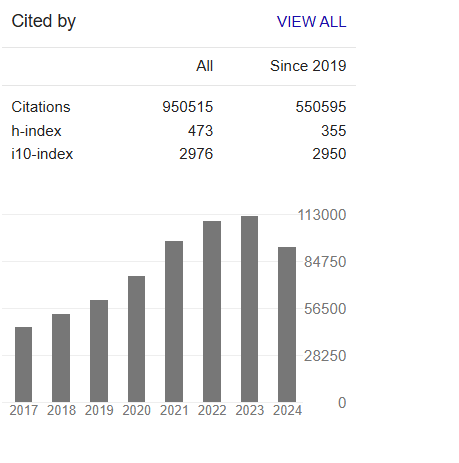Treatment of Oil from the Oil Industry Wastewater by the Production of a Hydrophobic Magnetic Polymer Nanocomposites
Abstract
Delia Teresa Sponza, Rukiye Oztekin
A novel, economic and environment-friendly composite material based on magnetic hollow magnetite (Fe3O4) nanoparticle coated with a polyvinyl pyrrolidone (PVP) was produced to treat the oil from the oil industry wastewaters. The oils were readily removed via hydrophobic PVP -magnetite nanocomposite. In this study the physicochemical properties of the produced PVP-magnetite nanocomposite were investigated with Fourier transform infrared spectrophotometer (FTIR), X-ray diffraction (XRD) and thermogravimetric analysis (TGA) analysis. The effects of increasing PVP -magnetite nanocomposite concentrations, the effects of separation time, effect of pH on the removal of oil were investigated. The removals of individual oil types with different carbon (C) ring numbers (from C 9 up to C 25) were investigated during oil removal. The reusing capacity of PVP-magnetite nanocomposite was investigated after 40 cycling for oil removal. The removal yields for all pollutants in the oil industry was investigated. FTIR analysis results showed that in the spectrum of PVP-coated magnetite nanocomposite the peak at 2500 1/cm can be attributed to the stretching vibration of C−N and C�?�O. XRD spectrum of the synthesized PVP– magnetite composite nanoparticle exhibited that the dominant phase of the composite nanoparticle is magnetite with a particle size of 16.8 nm. TGA analysis showed that about 69% weight loss was observed at 500°C and this is attributed to decomposition of PVP. Nonane (9 C rings) and undecane (11 C rings) have high removal yields like 99.99% while the oils with high carbon rings such as, 80% ducosene (22 C rings) and 72% pentacosane (25 C rings) exhibited low yields. The aforementined nanoparticle can be used 29 times to remove the oil with a yield of 99.99%. The maximum CODdis, COD, TSS and oil removal efficiencies were 99%, 99.5%, 99% and 99.90% respectively, via adsorption with 3 mg/l hydrophobic PVP-Fe3O4 / Polimer nanocomposite.



